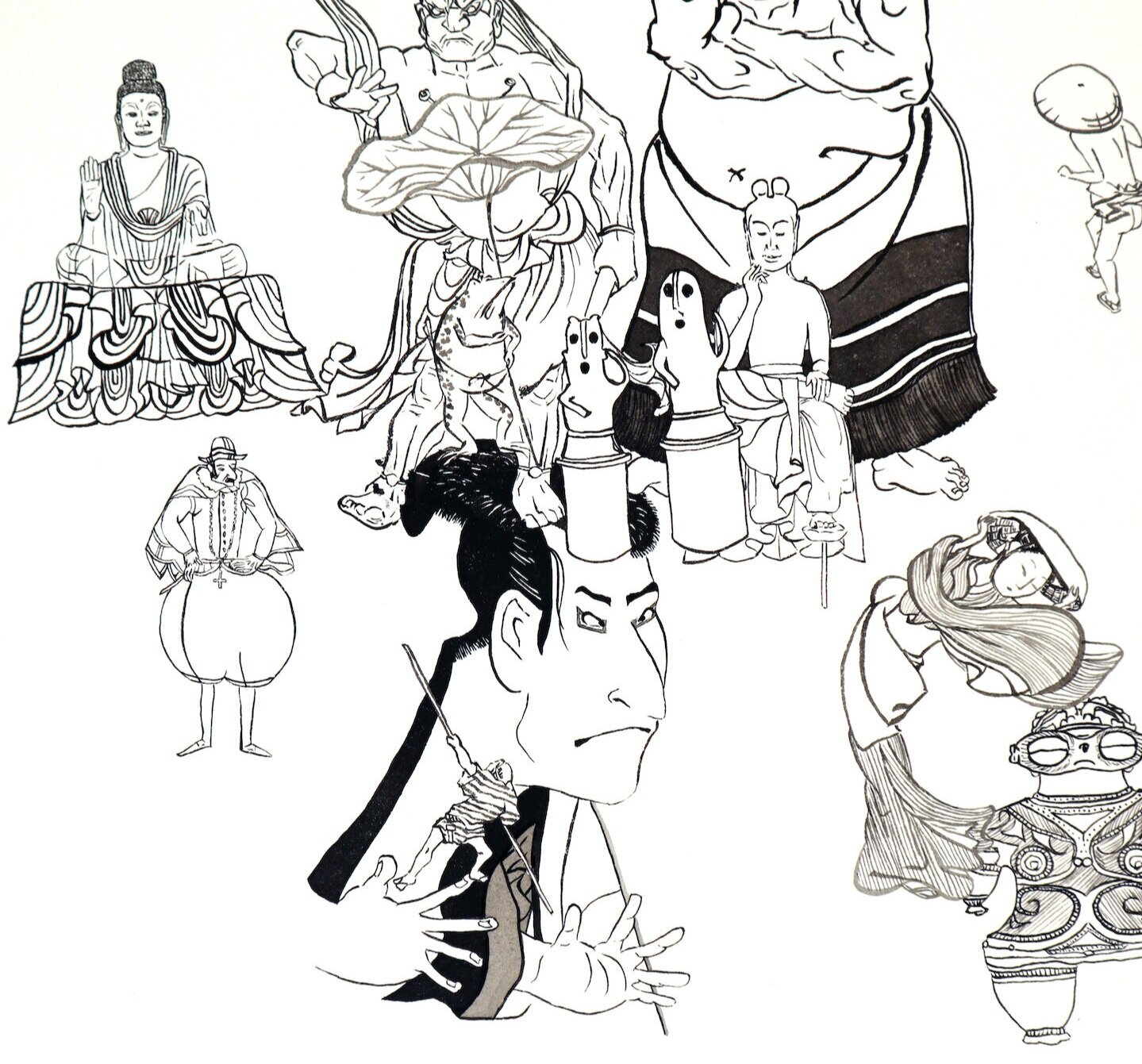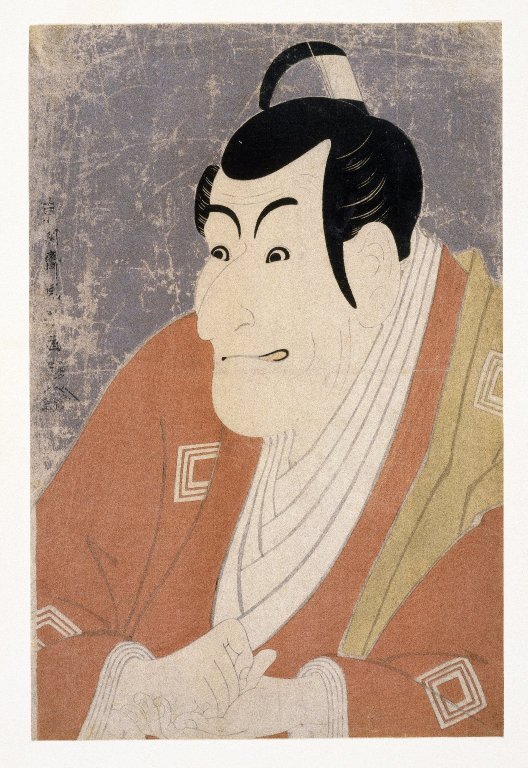The latest addition to my compilation painting of Japanese historical figures is the bottom left figure with a menacing expression and hands aggressively pointing forward.
In progress 22x30” sumi ink on Arches paper
This is from a woodblock print by Tōshūsai Sharaku 東洲斎写楽 (usually known as Sharaku) from the late Edo period. He was known for portraits of kabuki actors, and this is one of the most well-known. The full title is Ōtani Oniji III in the Role of the Servant Edobei in the play The Colored Reins of a Loving Wife 恋女房染分手綱.
Let’s unpack that:
Ōtani Oniji III = name of actor
Servant Edobei = name of character in play
The Colored Reins of a Loving Wife = title of play
It’s a tragic love story full of plot twists, evil characters, a loyal wife fulfilling her duties. Here’s the detailed plot in English.
Original: Woodblock print; ink, color, white mica on paper; 15 x 9 7/8”
What is kabuki?
Popular theater in Japan that started about 400 years ago. The name kabuki 歌舞伎 describes it well: singing歌, dancing舞, acting伎. It was popular among city people, commoners, but not the higher class. The actors were like celebrities in our day in popularity and portraits of them were sought after by fans.
Who was the artist?
Sharaku was a woodblock print artist known for portraits of kabuki actors. He produced almost 150 different prints in only 10 months! Not much is known about him or what happened after that successful year.
First theory: he may have been a Noh (older form of Japanese theater) actor from a daimyo (lord) family so he wouldn’t have had to continue his art career for a living. As part of that family, he would have been trained in calligraphy, which helps explain his incredible skill with the brush and draftsmanship without any record of apprenticeship before his 10-month career. Some say as a performer, he would have had a unique perspective of telling a story visually, though from a different theater tradition.
Another theory that I find fascinating is that Sharaku is actually Hokusai (the artist known for the Great Wave woodblock print). Hokusai’s artist name before “Hokusai” was “Shunro” after his teacher Katsukawa Shunso. He produced many actor prints and illustrated books leading up to 1794 when “Sharaku” was active for less than a year, and “Shunro” produced no actor prints during that time.
I included the reference information to this article explaining the theory included at the end. The art historian goes through the details of comparing lines, dramatic kabuki poses apparent in both, even down to how a demon is depicted by both—all visual evidence that I find quite convincing!
His most well-known prints are dramatic close-ups. The hands and faces are key to telling the audience who the character is. He also clues in the viewer by including the family crest of the actor on the garment.
He had a way of capturing the core character of the role the actor played as well as distinct, recognizable features of the kabuki actors. In a time when it was more common to have idealized or generalized features, it was an unusual style to see recognizable, even exaggerated features without attempting any idealization
Why does the figure (below) look menacing?
The character this actor is playing is the bad guy Edobei 江戸兵衛
Edobei is the servant (like a henchman) of the evil character in the play
Sharaku’s work is some of the most well-known in woodblock prints, but it was new information to me that his career was so short (though prolific)! I’m also intrigued by this theory about Sharaku’s identity as Hokusai - just a glimpse into the abundant treasure hunts and mysteries to solve in art history!
I’ll keep sharing some peeks into Japanese history as I continue filling this painting with figures.
Article referenced: Tanaka, Hidemichi. "Sharaku Is Hokusai: On Warrior Prints and Shunrô's (Hokusai's) Actor Prints." Artibus Et Historiae 20, no. 39 (1999): 157-90.





